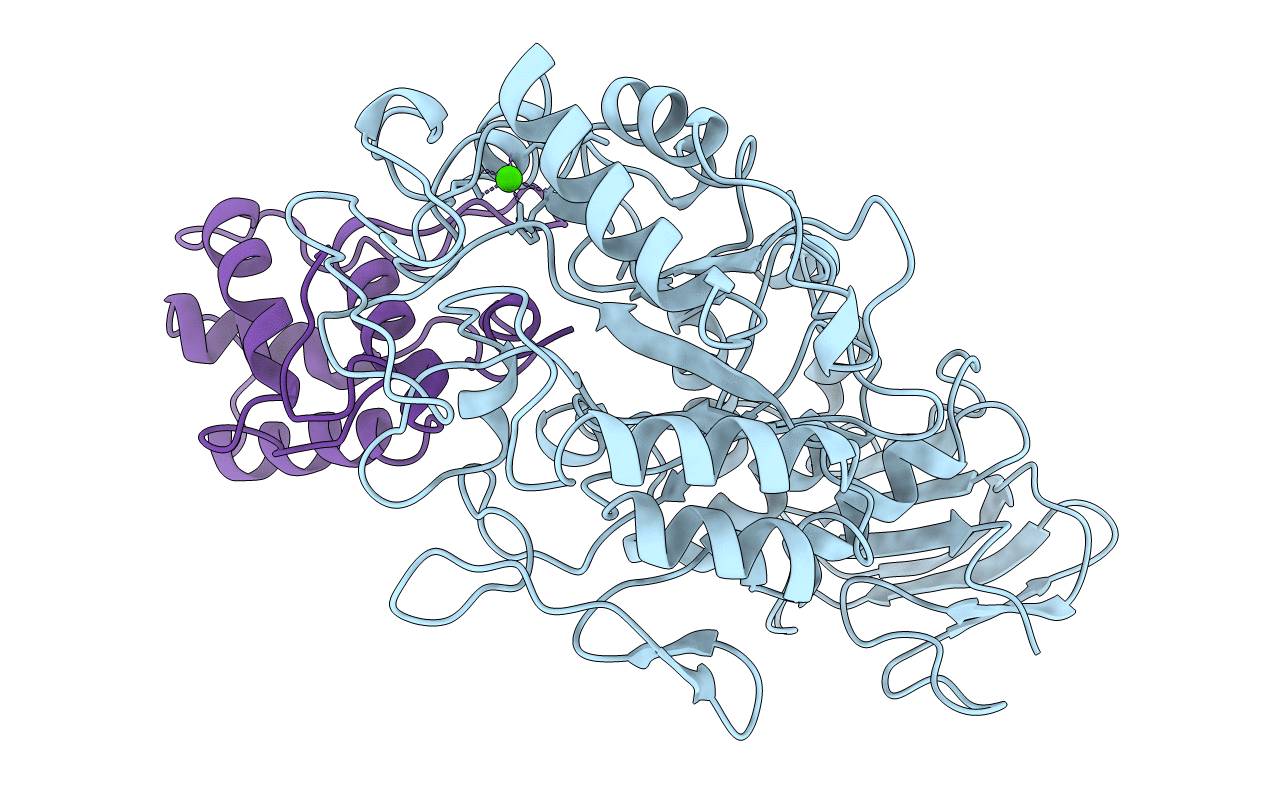
Deposition Date
1998-01-13
Release Date
1999-03-02
Last Version Date
2024-11-13
Entry Detail
PDB ID:
1TMQ
Keywords:
Title:
STRUCTURE OF TENEBRIO MOLITOR LARVAL ALPHA-AMYLASE IN COMPLEX WITH RAGI BIFUNCTIONAL INHIBITOR
Biological Source:
Source Organism:
Tenebrio molitor (Taxon ID: 7067)
Eleusine coracana (Taxon ID: 4511)
Eleusine coracana (Taxon ID: 4511)
Method Details:
Experimental Method:
Resolution:
2.50 Å
R-Value Free:
0.26
R-Value Work:
0.19
R-Value Observed:
0.19
Space Group:
C 2 2 21


